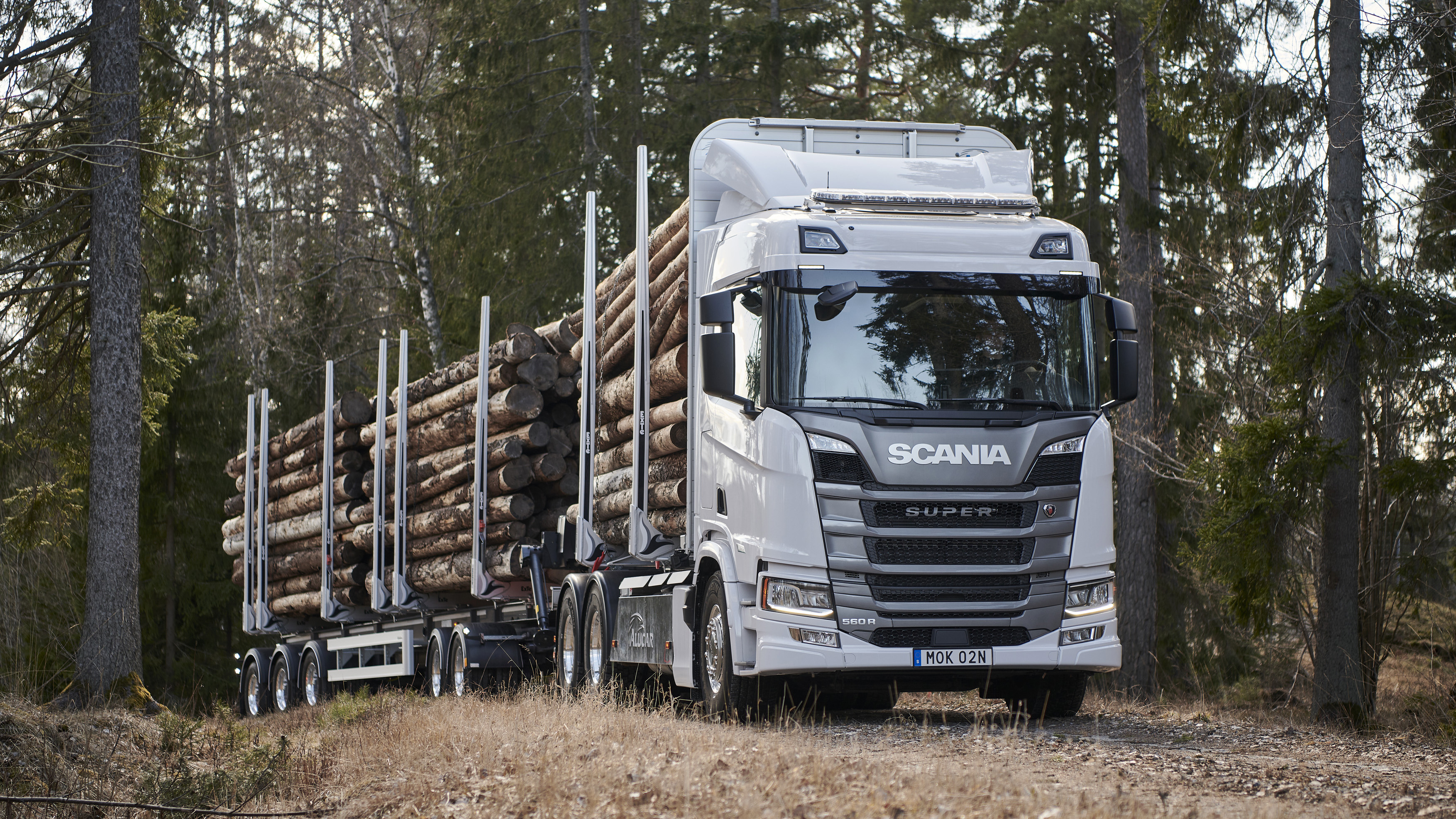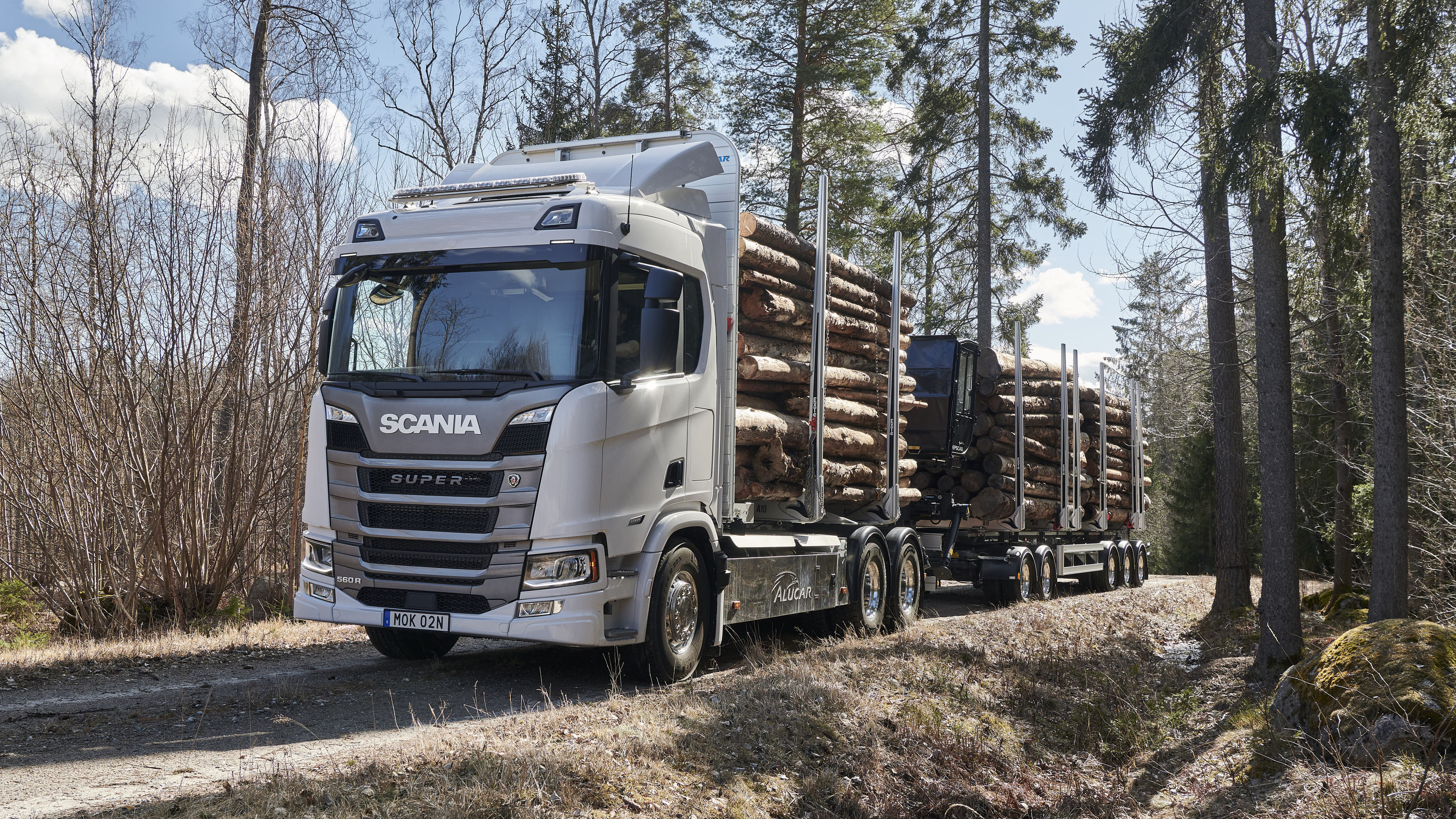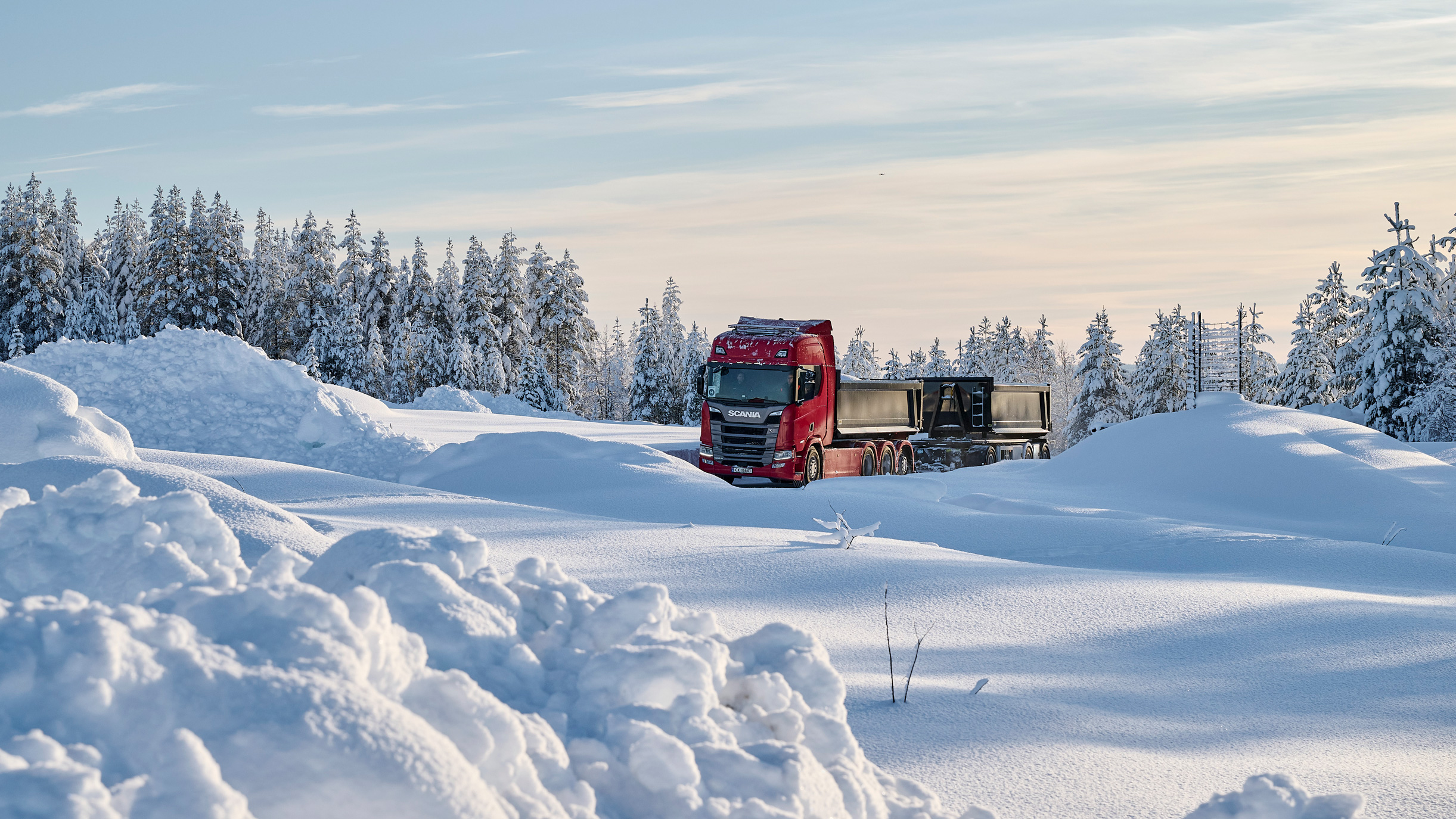
Scania 560 R review: the heaviest thing TG’s ever tested
That looks… impressive.
This, as far as we can be bothered to look into the archives, is possibly the heaviest properly road-going thing TopGear.com has ever tested. It’s a Scania 560 R tractor unit dragging a small pre-felled woodland on the back; 65-tonnes of potential paper. Or a self-assembly log cabin or two. Seven axles of parallel parking nightmare. Oh, and did we mention that we did so on ice, in Norway, and we don’t have an HGV licence?
I feel like someone needs to be reported to the authorities.
Don’t panic. We used a test track without public access and had a Big Things driving instructor with us at all times, although our minder paid attention to whether or not we were competent for about five minutes and then appeared to have a little nap-slash-timeout. Quite the compliment.
So how does it work if you’ve never driven something that big?
With remarkably little fuss. The 560 R has a new ‘Opticruise’ G33 ‘box, which is slicker, lighter than the previous generation (to the tune of 75kgs) and offers 14 forward gears including super-crawler and overdrive, as well as up to eight reverse. Which sounds way more complicated than it actually is, because it’s all automatic. Lots of gears mean that the tractor unit can punch out maximum torque at lower rpm, carving out extra efficiency - eight per cent improvement in average fuel bills apparently. That would be enough for someone with a private car, but if you’re running a fleet of these things 24/7, every percent is a proper saving.
The good bit is that you don’t need any more skill in terms of the basic operation than an automatic car: select a gear, release the parking brake and off you go. Obviously there’s a lot more to it in terms of control of the trailer(s) and being able to turn and manoeuvre, but the basics are really very… basic. Even with steerable axles on the back, it all syncs to what you’re doing with the wheel, so it’s not a stressful experience. Which is key for those that operate these things for a living.
It’s also remarkably comfortable and accommodating; the sprung seat isolates you from the road surface - even if you’re bouncing down a site-access or forest track - and the whole thing is quiet and vibration-free. Even the view is panoramic and comprehensive, which is really very useful when there’s IKEA’s next-season catalogue dragging behind you and random cyclists nipping up the inside.
Surely it needs a mega-motor to pull stuff like that?
Sort of. The engine is a DC13 173 six-cylinder. Which doesn’t sound like much, especially when Scania itself produces very tasty and more powerful V8 versions. But at just under 13-litres capacity it’s a proper big six, producing 560bhp and easily over 2,000lb ft (2,066, to be exact), which means the bores are more than a two-litre bottle of pop. Each.
And those figures are not exactly anaemic, especially when you realise that full torque hits basically from idle at 900rpm. Low rev, high-torque remember. Again, it makes dragging around such a heavy load a remarkably unremarkable experience. There aren’t even any high revs to make it sound like hard work.
Interestingly, like all motorised sectors, the HGV crowd are on a mission to get themselves into a more sustainable position, so these things can run on HVO (hydro-treated vegetable oil), which offers up to a 90 per cent reduction in CO2 if you compare it to traditional diesel fuel and squint a bit. Essentially it’s diesel-ish biofuel made from waste oil and rapeseed. So the answer to keeping trucks on the road may well end up being eating more chips. Bonus.
It also has a small crane in the middle, y’know, so that you can throw those boughs around, and that’s powered by an ED-PTO (engine-driven power-take off). They wouldn’t let us play with that, mumbling something about made-up stuff like ‘public liability insurance’ and ‘potential lawsuit’.
Top Gear
Newsletter
Thank you for subscribing to our newsletter. Look out for your regular round-up of news, reviews and offers in your inbox.
Get all the latest news, reviews and exclusives, direct to your inbox.
So how does it handle? Is it a bit wooden?
Using the usual roadtester’s dictionary would seem a bit redundant - what counts here is a different kind of performance entirely. But we’re back to how simple these things are to drive, albeit in controlled circumstances and without the vagaries of actual traffic. And it sounds absolutely bonkers to say that the whole rig was surprisingly nimble - the test course included some properly tight bends, and the whole rig tottered around without losing a single bit of bark, even with an idiot at the controls.
The biggest things we learned were mainly about the amount of anticipation HGV drivers have to do; everything from setting yourself up for road position when approaching junctions and turns, to predicting what other people might do in terms of braking distances. Even though the brakes on these things are surprisingly effective, there’s an awful lot of momentum to dissipate. The aim always is to avoid problems before they happen, and keep yourself from any hard inputs. These things are big, and they need care and skill.
Was the ice a problem?
Yup, but there are solutions. Essentially, big lorries like this don’t generally struggle for torque, but they hate losing traction - it can bog the tractor unit in short order. So lorry drivers tend to like to maintain a bit of momentum, especially on a slippery surface. The ‘box helps by having lots of gears in that it doesn’t have a big torque-pause when it shifts, so an uphill gearchange doesn’t necessarily spin the back wheels when the torque resumes.
But the fun stuff is for getting going in the first place. One solution is pretty simple: a gravel dispenser. It’s a pair of bins filled with road salt and grit which can be dropped in front of the drive wheels, creating a sort of instant road on slippery bits. Obviously it’ll run out eventually, but our guide reckoned that you could get up to 200m of instantly-dispensed road if careful.
The other is very odd: a cabin-deployable set of automatic snow chains called OnSpot. It’s basically a robot arm in front of the drive wheels with a spinning flail of snowchains on a metal frisbee. Press the button (there’s a camera so you can watch what’s happening inside the cab), and the arm positions the frisbee near the wheels so that the chains flick under the drive wheels, out the back and around, giving an endless chain on which to drive. It’s not for constant driving, more just to get the rig moving, but it’s a remarkably simple and yet satisfyingly medieval-looking solution. And it actually works.
So what’s the verdict, is 65-tonnes hard work?
It’s a breeze. Driving an old car is technically more challenging. But that’s driving on a closed course without the biggest concern for a real truck driver - other people and traffic. A lorry driver with a load like this might not be worrying about the physical act of driving the truck any more, but there are 1,000 other things to consider, and everything they do has consequences.
We only got a small glimpse, but if anything, it just convinced us to be as patient and possible with hauliers and respect what they do. And next time, we want to try reversing. Although we still may not be allowed.
Featured

Trending this week
- Car Review
BMW iX3






